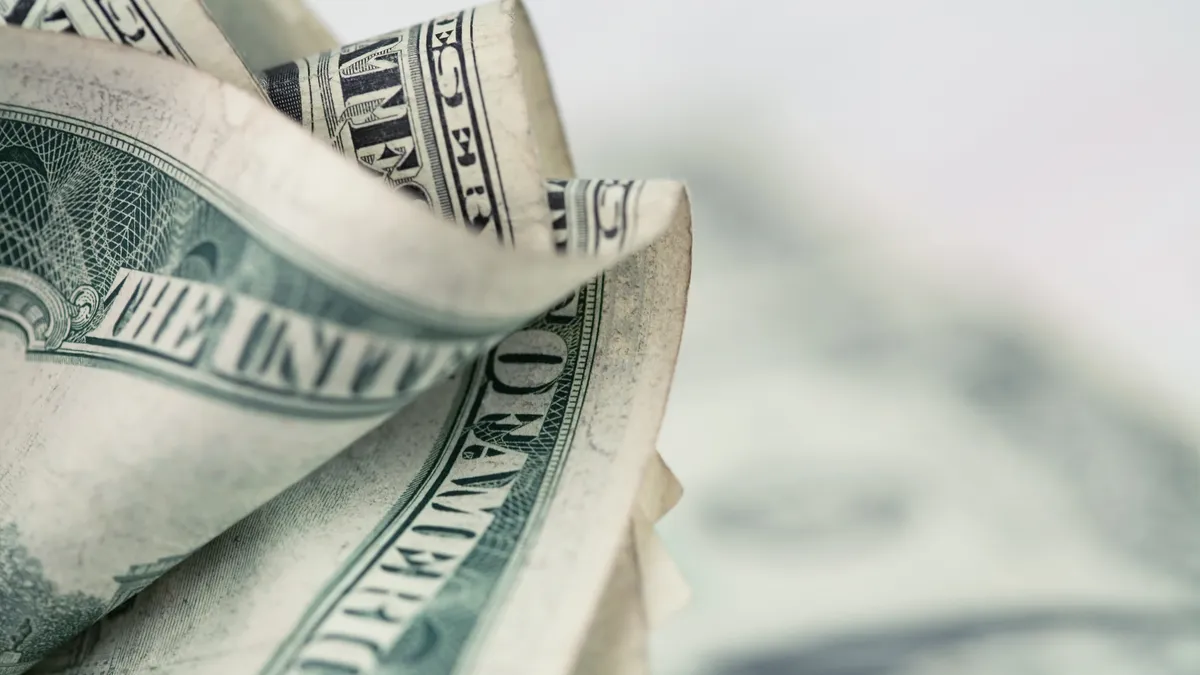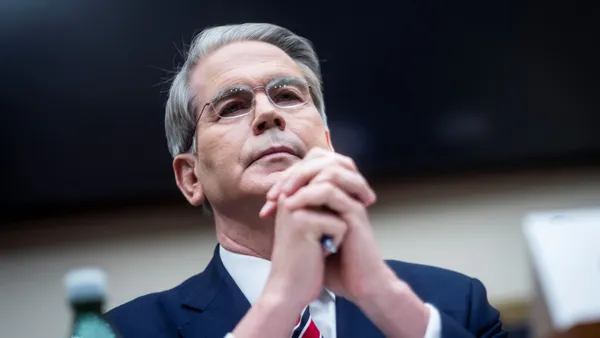Dive Brief:
- A measure of inflation excluding volatile food and energy prices and closely tracked by the Federal Reserve edged up to a 2.8% annual rate in October from 2.7% in September, persisting above the Fed’s target as policymakers take a cautious view toward easing.
- The core personal consumption expenditures price index in October increased 0.3%, the Bureau of Economic Analysis said Wednesday. A gauge of consumer spending — personal consumption expenditures — rose faster than inflation, at 0.4%. The increase affirmed recent data showing solid consumer confidence.
- "The disinflationary trend that we saw earlier this year has effectively stalled as we head into what’s likely going to be a bumpy 2025 inflation ride,” Olu Sonola, head of U.S. economic research at Fitch Ratings, said in an email. “The Fed will be concerned and cautious,” he said, adding that “the totality of the data continues to point in the direction of a rate cut in December, while guiding towards a very slow pace in 2025.”
Dive Insight:
Fed officials during a Nov. 6-7 monetary policy meeting said they believe that inflation will steadily move to their 2% goal, although a few participants said the central bank may hit its target later than previously anticipated, according to minutes of their meeting released Tuesday.
“With regard to the outlook for inflation, participants indicated that they remained confident that inflation was moving sustainably toward 2%, although a couple noted the possibility that the process could take longer than previously expected,” according to the meeting minutes.
The central bank will likely slow the pace of easing next year after trimming the main interest rate by a quarter point to a range between 4.25% and 4.5% at a Dec. 17-18 gathering, EY Senior Economist Lydia Boussour said Wednesday.
“We believe the Fed may decide to slow the recalibration process as policymakers more carefully feel their way to a neutral policy stance,” she said in an email.
The central bank will probably cut the federal funds rate by 1 percentage point in 2025, with quarter-point reductions at every other policy meeting, Boussour said. “Notably, risks are tilted toward less monetary policy easing in 2025-2026.”
Economic growth and consumer spending have defied predictions of a downturn this year.
Gross domestic product rose at a 2.8% annual rate during the third quarter after increasing 1.4% in Q1 and 3% in Q2, the Bureau of Economic Analysis said Wednesday.
The Atlanta Fed on Wednesday upgraded its estimate for GDP growth during the current quarter to an annual rate of 2.7% from 2.6%.
Consumer spending has remained robust amid rising confidence.
“Consumer confidence continued to improve in November and reached the top of the range that has prevailed over the past two years,” Conference Board Chief Economist Dana Peterson said Tuesday in a statement.
Consumer optimism for their finances over the next six months hit a new high and the proportion of consumers anticipating a recession during the next year fell to the lowest level since the Conference Board began tracking that sentiment in July 2022, Peterson said.
The view of households toward the labor market has also brightened, she said, commenting on the Conference Board’s Consumer Confidence Index for November.
Compared with last month, consumers were “substantially more optimistic about future job availability, which reached its highest level in almost three years,” Peterson said.















